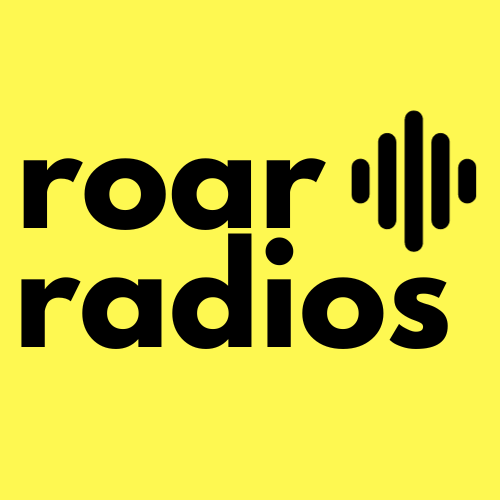The Festival Toolkit: Building Clear, Calm Comms for Busy Sites
Festivals look fun from the outside. On the inside, they’re moving parts: staging, artists, production, food vendors, ticketing, bar teams, security, medical, traffic control, logistics, cleaning and waste crews.
When communication falls over, everything feels harder than it should.
That’s where a proper festival comms toolkit comes in—not just “some radios,” but a matched set of radios and accessories that fit each role on site.
At Roar Radios, we see the same combination stand up again and again for Australian festivals:
Motorola DP2600 + in-ear surveillance kits + remote speaker mics + high-noise headsets.
Here’s how that set works together, and how to think about it for your next event.
1. The Backbone: Motorola DP2600
Think of the Motorola DP2600 as the anchor of your festival fleet.
You get:
Digital clarity (DMR): Clear audio that cuts through stage noise, generators and crowds.
Analog + digital modes: Plays nicely with legacy radios if you’re mixing fleets.
Multiple channels / talkgroups: Easy to separate traffic control, security, production, bars, cleaning, etc.
Rugged build: Dust, light rain, knocks off barricades—no drama.
Shift-ready battery life: Designed for long operating days when call volume spikes.
For control rooms and roaming supervisors, the DP2600 gives enough screen, feedback and channel flexibility to actually manage a site—not just hope for the best.
2. In-Ear Surveillance: Quiet Comms in Crowded Spaces
Open speakers are fine on a loading dock. They’re not ideal:
At front-of-house dealing with patrons
In VIP/artist areas
When sharing sensitive information (ejections, medicals, incidents)
In-ear surveillance kits (acoustic tube or low-profile earpieces) solve that.
Why they belong in your festival toolkit:
Discreet: Instructions stay in the ear, not blasted across a queue.
Audible in noise: Staff hear calls clearly over music and crowd.
Professional presence: Security and key front-facing staff look switched-on and in control.
Best for: Security teams, stage managers, artist liaison, FOH supervisors, cash handling, bar managers.
3. Remote Speaker Microphones: Hands-Free, On-the-Move
When staff are:
Managing a gate line
Carrying stock or ice
Driving buggies
Cycling between bars, toilets, and waste spots
…they don’t have a spare hand to fish a radio off their belt.
A Remote Speaker Microphone (RSM) clipped to the collar or shoulder keeps things simple:
PTT at the shoulder: Quick responses without stopping work.
Louder, closer audio: Easier to hear in wind and crowd noise.
Keeps the radio safe: Radio stays on the belt or in a pouch.
Best for: Entry teams, roaming site ops, logistics, bar runners, volunteer coordinators.
4. High-Noise Headsets: When “Loud” is the Job
Some zones are just loud by design:
Main stages
Monitor world & FOH
Generator farms
Backline loading, forklifts, plant movement
Here, even the best handheld speaker won’t cut it.
High-noise headsets (over-ear or helmet-mounted) give:
Serious hearing protection to meet WHS responsibilities
Isolated audio — directions land the first time
Clean PTT integrated into the cup or inline
Best for: Stage managers, patch techs, FOH/monitor engineers, pyrotechnics, heavy plant operators.
5. Putting It Together: Channels, Roles & Gear
A simple way to think about your festival toolkit:
Control & Command
Radio: DP2600
Accessory: RSM (plus spare earpiece for noisy periods)
Use: Monitor all key channels, coordinate responses
Security & Crowd Management
Radio: DP2600
Accessory: In-ear surveillance (and RSM for supervisors)
Use: Discreet, clear instructions; quick escalation
Stage & Production
Radio: DP2600
Accessory: High-noise headset (main), in-ear or RSM for quieter areas
Use: Cues, changeovers, vehicle & forklift moves
Entrances, Box Office & Bars
Radio: DP2600
Accessory: RSM or in-ear (depending on noise and role)
Use: Queue management, wristband issues, ID checks, stock calls
Cleaning, Waste & Site Ops
Radio: DP2600
Accessory: RSM
Use: Job dispatch, hazard reporting, quick response without stopping work
The aim is simple: every critical role has the right way to hear and talk, not just “a radio somewhere on their belt.”
6. Why a Matched Kit Beats a Mixed Bag
A lot of comms headaches on event sites come from mismatched gear:
Random hire radios with no accessories
Personal devices on different bands
One noisy channel for everything
Earpieces failing halfway through the night
A deliberate festival toolkit avoids that:
Consistent hardware (like a DP2600 fleet) = predictable performance
Planned channel layout = less chatter, faster responses
Role-based accessories = people actually use their radios properly
Fewer training issues = quick brief, everyone’s up to speed
You don’t need the fanciest tech on the market. You need the right combination, set up cleanly.
7. How Roar Radios Can Help
If you’re planning a festival, concert, community event or multi-site activation in Australia and want comms that just work:
We supply Motorola DP2600 radios and matched accessories
We help map channels, roles and accessories to your site layout
We ship, label and support nationally, so crews can plug in and go
No overcomplication. Just a toolkit built for the way real festivals run.

